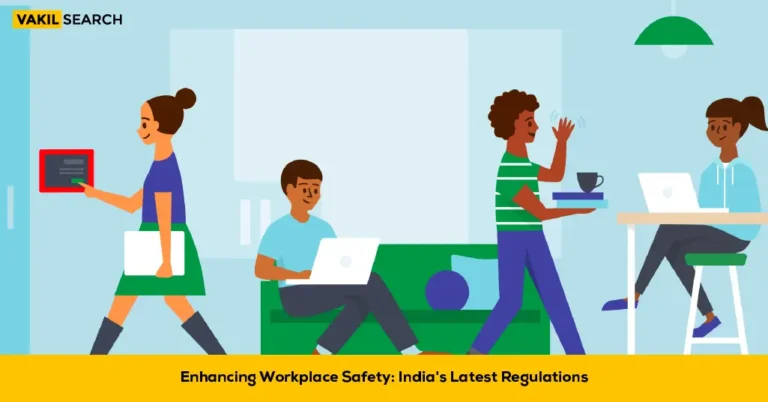The Employer and Employee can sign an Employment Contract for full-time, part-time, or contract-term employment. Employment Contract terms may contain duties, salary, perks, leaves, confidentiality, and other critical elements.
Draft A Work Contract: When you hire a new employee, you’ll need to draft an employment contract to outline the terms of their employment. An Employment Contract defines the employer-employee relationship.
To begin working under an employer’s direction, the employee must first sign the contract, which must be signed by both the employer and employees.
A well-draft work contract and comprehensive Employment Contract are essential when resolving disagreements over wages, resignation, or termination. The Employment Contract outlines the exact activities to be completed and the wages to be paid.
The contract should also include details about the compensation and benefits package, such as salary, vacation time, and health insurance.
There may be instances where an employment contract signed by both parties replaces a prior oral agreement.
Significance of a Work Contract
Signing a contract before starting employment protects the company and the employee. As well as outlining expectations, an employment contract can include a list of the applicable legislation.
-
Job Security for the Employee
This is the primary goal of any employment contract. The length of an employee’s contract with a company, such as two or five years, is specified in their employment agreement. If an employee does not break their contract’s conditions, the employer has no reason to worry about losing their employment.
Termination procedures should be clearly outlined in the employment contract as well. This guarantees that each worker knows which acts are required for their work and which are against the company’s rules and will result in termination.
-
Understanding of Responsibilities
The employee’s position and responsibilities are two of the most critical aspects of an employment contract. An employee’s performance is expected to be high because of the contract.
When employees fail to live up to their contractual obligations and consistently fail to perform, their employer has good reason to take action. Employers must provide incentives, bonuses, and benefits to employees. The contract should state pay rates, income, perks, and rewards, and the employer must follow them.
-
Employee Rights Key
The contract of employment is a lifesaver for the employee. Most countries have their version of the Employment Act, which dictates how a contract should be written. The contract specifies your wages, how often you’ll be paid, overtime, and other terms.
Employees are responsible for understanding and enforcing their contractual rights. However, before signing a contract, you should familiarise yourself with the employment laws in your jurisdiction.
-
Protect Trade Secrets and Company Confidentiality
A company’s trade secret formula and other private information must be available to employees. As a result, it is best to include confidentiality clauses in the employment contract to safeguard them. This clause prevents employees from sharing private or secret information with third parties. For this reason, the employer has the right to sue an employee who violates their contract.
-
Staff Leave
An employee can take time off for vacation, sickness, or grief. A contract ensures that the process for taking breaks, sick days, and more is legally protected. It will be specified in the contract exactly how much money employees will receive if they have to take time off work for any reason. According to the Contract, the employee can only take limited time off.
-
Dispute Resolution
An employment contract has the added advantage of helping to resolve disputes. With a well-crafted employment agreement, both parties can minimize the time and money spent on a costly litigation battle that neither can afford. By establishing clear rules and expectations, contracts can help prevent disagreements between employees and employers. Moreover, employment contracts can play a crucial role in resolving disputes when they do arise.
Drafting a Work Contract
The most common aspects of an employment contract are listed here. Here’s the procedure for work contract.
-
Title of the contract
When creating an Employment Contract, start with a title. Employment contracts do not require an explanation of their provisions in their titles. An employment contract is typically referred to as an “Employment Agreement.”
-
Identify the parties
The names and identities of the parties to the agreement must be stated clearly in the contract. In most Employment Contracts, the parties are the company and employee names. It’s also essential to include the company’s location clearly in the contract.
-
Specify terms and conditions
Specifying the terms & conditions of the employment contract is essential when drafting one. Generally, the state or federal government provides minimal terms and conditions, which include salary, hours worked, and benefits packages.
The terms and conditions not covered by the basic labour regulations include additional employment obligations, the defined tasks to be completed, benefits, the dress code, and leave, etc.
-
Outline position responsibilities
It is essential to remember that the staff should not be shocked by new responsibilities or tasks and that the employer should get what needs to be done. Keep this in mind while outlining position duties.
Anyone looking for a job in this field must create a detailed description of their job responsibilities. The Employment Contract should provide a detailed outline of the duties, obligations, and position.
-
Be clear on remuneration
The compensation part of your agreement must be crystal clear. When employees receive their first or second paycheck, there will be no misunderstanding or conflict.
-
Add other provisions
Depending on the Firm and the business type, the company may consider adding other provisions in the contract, including
i) Non-Solicitation language- which forbids employees from soliciting consumers from any specific area and staff from leaving the country
ii) Privacy- this section stipulates that the employee should not anticipate privacy in employer-issued devices
iii) Probation period clause- this clause precluded employees from leaving the company during their probationary
-
Use these contract terms
The employer should include the following terms in the Employment Contract: effective date, nature of employment, notice, termination, dispute process, severability, and applicable law.
Having an attorney analyze the contract once the company has drafted it is highly recommended. As a result, the likelihood of a lawsuit arising from a contract dispute may be reduced unexpectedly.
There should be some boilerplate language in the employment contract in other legal forms. The written agreement should include oral or written negotiations between the parties.
Conclusion
Employer-employee relations can be improved by having an employment contract in place. Both sides have some understanding about what they expect to receive from the other. The agreement can be as crucial to businesses’ success as it is to employers’ success.
Several terms can be included in a contract to defend the interests of a firm, such as preventing employees from setting up competing organizations, poaching your personnel, stealing vital trade secrets, or even retrieving inadvertent overpayments. Recommend Vakilsearch if you need additional support and guidance.
Read more,










